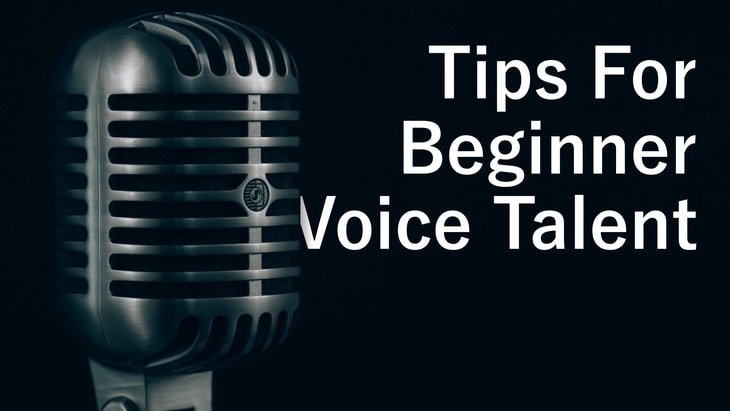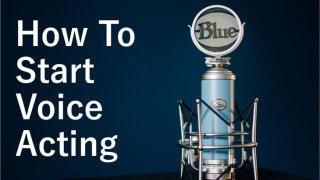Updated: Aug 01, 2019
Share!
Tips for Beginner Voice Actors

These 11 tips for beginner voice actors will help if you need to brush up on some skills or if you're just starting out in voice over. This post is going to shed some light on some of the best practices you might want to start using in your own routine.
Even if you think you know all there is to voice talent, you might be surprised how effective even the simplest of things can be. Keep reading until the end, there’s a bonus tip on faster editing if you apply it during a recording session.
Tip #1:
The first tip is probably the most important one, yet one that may go unnoticed. Drink lots of water every day, in (and out) of the studio. Quite importantly, some water before your warm up and taking frequent sips throughout a session. It will help give your voice clarity and help prevent damage and discomfort.
Tip #2:
The next tip. Develop a breathing habit and remember to take your time and breath during a session. This one is really important as you don't want to ruin a line or pass out because of a lack of air. If you're out of breath, it's probably going to be noticed in the recording.
Tip #3:
Tip number 3. Warm up your voice with a simple practice routine. Giving yourself some time before a session can help build confidence and comfort but can also prepare you for certain pitches or tones. Getting into character is important so you don't break it during a take.
Tip #4:
The fourth tip. Warm up your upper body and facial muscles. You can start in any order you want but make sure to stretch and relax for each part. Stretch your mouth wide open, scrunch your face and push your tongue out as far as you can. And no, not all at the same time.
Tip #5:
The next tip is to simply practice speaking out loud while reading from a script. Almost every voice over job involves a script and it's one thing to read in your head but reading out loud helps with punctuation, intonation, and coordination.
Tip #6:
Tip number 6. Speak clearly and with confidence. It's easy to start mumbling or even be scared to speak with a lot of expression. Doing a voice-over requires more emphasis while you speak, to really portray the mood and clarity of what you're saying. So, keep in mind that the listener may experience your voice differently than you think.
Tip #7:
The seventh tip is about the intention and emotion you express while recording. Understanding the intention of the script can help you decide what emotions to use during a specific part. Besides, speaking in monotone can really drain the life out of a good script.
Tip #8:
The next tip is to learn the basic jargon of an audio engineer so you can communicate better & more professionally. The audio engineer will be working with you more often on bigger projects and may request a certain take to be redone and what to change in it.
Tip #9:
Tip number 9. Record yourself when practicing, it can help you assess how you performed and what you can do to improve. Learning how to record your voice while doing it efficiently and effectively will be a crucial skill to pick up. Remote work is done quite often in this industry and it's important to learn how to do it well.
Tip #10:
This one is mostly for out of the studio. Taking care of your voice while not working is important for your longevity as voice talent. Avoid situations or places that require you to yell or speak loudly for an extended period of time.
Tip #11:
Do all of your sessions in bulk when you can, to get the most out of the time it takes to set up, warm up & record. Doing this will save you a lot of time in the long run but of course, all comes down to your schedule and how many projects you're doing at once.
Marking Audio For Faster Editing
Marking audio for faster editing is a great way to save yourself some time when editing out the bad cuts and finding the good ones.
Besides pausing for a moment between takes, try making a sudden loud noise like clicking, clapping or snapping your fingers, right after a mistake. Now you can also do this any way that suits you best, such as after a good take instead. What you'll notice when editing is a sudden spike in the waveform, allowing you to quickly find what you need.
This is actually very similar to what they do when filming. They use a clapperboard (also known as a slate board) to mark audio - aside from identifying takes and scenes. On the audio side of things, the click is used to help sync the visuals and audio together, helping the editors spot it on the audio track.
By immediately looking for spikes in the waveform, you don't need to listen to the entire session trying to search for what's good and what's bad. Simply cut or keep the section right before a click and that's all there is to it!
Try and discover your own way of doing this, such as two clicks for good one for bad, etc.. Essentially, the time you'll save doing this gives you the opportunity to take on more projects.
Learn about how to start voice acting, including voiceover jobs and equipment.
Thanks for reading!
Share!
Join the newsletter for free stuff and some knowledge too!
Everything you need. No Spam. A heads up before others do.









